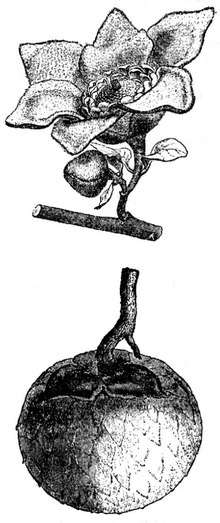Fusaea longifolia
Fusaea longifolia is a species of plant in the family Annonaceae. It is native to Brazil, Colombia, Ecuador, French Guiana, Guyana, Peru, Suriname and Venezuela.[2] Jean Baptiste Christophore Fusée Aublet, the French botanist who first formally described the species using the basionym Annona longifolia, named it after its long-leaved (longus and -folium in Latin) foliage.[3][4]
| Fusaea longifolia | |
|---|---|
 | |
| Botanical illustrations of Fusaea longifolia | |
| Scientific classification | |
| Kingdom: | Plantae |
| Clade: | Tracheophytes |
| Clade: | Angiosperms |
| Clade: | Magnoliids |
| Order: | Magnoliales |
| Family: | Annonaceae |
| Genus: | Fusaea |
| Species: | F. longifolia |
| Binomial name | |
| Fusaea longifolia | |
| Synonyms | |
|
Aberemoa longifolia Baill. | |
Description
It is a tree or bush. It has very short petioles. Its oblong leaves are 25 by 8 centimeters and come to a long tapering point at their tip. The upper surface of the leaves is hairless, while the underside has sparse hairs. Its flowers are extra-axillary, and occur alone or in pairs. The flowers are on long pedicels. The pedicels have 1–2 bracteoles. Its sepals are partially fused to form a 3-lobed calyx. The outer surface of the calyx is covered in rust-colored hairs. Its flowers have 6 purple, oval to oblong, petals in two rows of three. Its flowers have numerous stamens. The outer stamens are sterile and have a petal-like appearance. The inner stamens are fertile and the tissue connecting the anther lobes extends to form a cap. The fruits are round, smooth with a network pattern on the surface, and have red pulp with numerous seeds.[5]
Reproductive biology
The pollen of F. longifolia is shed as loose, permanent, tetragonal or tetrahedral tetrads that are 115 micrometers in diameter.[6][7]
Habitat and distribution
It has been observed growing in forest habitats.[5]
Uses
Aublet and Safford describe it as edible and report that it is consumed by the indigenous people of French Guiana. Extracts from the leaves have been reported to contain bioactive molecules including alpha-Cadinol and Spathulenol.[8]
References
- Botanic Gardens Conservation International (BGCI) & IUCN SSC Global Tree Specialist Group 2019 (2019). "Fusaea longifolia". IUCN Red List of Threatened Species. 2019: e.T143326053A143326055. doi:10.2305/IUCN.UK.2019-1.RLTS.T143326053A143326055.en. Retrieved September 16, 2019.
- "Fusaea longifolia (Aubl.) Saff". Plants of the World Online. The Trustees of the Royal Botanic Gardens, Kew. n.d. Retrieved January 12, 2019.
- Stearn, William (2004). Botanical Latin. Portland, Ore. Newton Abbot: Timber Press David & Charles. ISBN 9780881926279.
- Fusée Aublet (1775). Histoire des plantes de la Guiane Françoise [History of the plants of French Guiana] (in French and Latin). 1. London: P. F. Didot jeune. pp. 615–616.
- Safford, W.E. (1914). "Classification of the Genus Annona, with Descriptions of New and Imperfectly Known Species". Contributions from the United States National Herbarium. 18. Washington, D.C.: Smithsonian Institution Press. p. 65.
- Walker, James W. (1971). "Pollen Morphology, Phytogeography, and Phylogeny of the Annonaceae". Contributions from the Gray Herbarium of Harvard University. 202: 1–130. JSTOR 41764703.
- Thomas, Annick Le; Lugardon, Bernard; Doyle, James A. (1994). "Pollen ultrastructure and relationships of Fusaea (Baillon) Safford and Duguetia A. Saint-Hilaire (Annonaceae)". Review of Palaeobotany and Palynology. 83 (1–3): 55–64. doi:10.1016/0034-6667(94)90057-4. ISSN 0034-6667.
- Tavares, J.F.; Barbosa-Filho, J.M.; Silva, M.S. da; Maia, J.G.S.; da-Cunha, E.V.L. (2005). "Alkaloids and volatile constituents from the stem of Fusaea longifolia (Aubl.) Saff. (Annonaceae)". Revista Brasileira de Farmacognosia. 15 (2): 115–118. doi:10.1590/S0102-695X2005000200008. ISSN 0102-695X.
